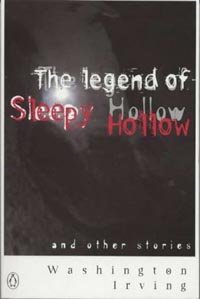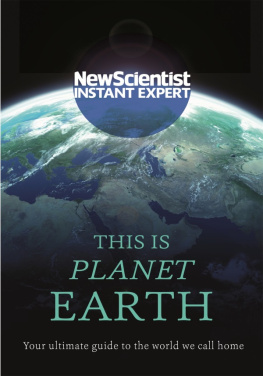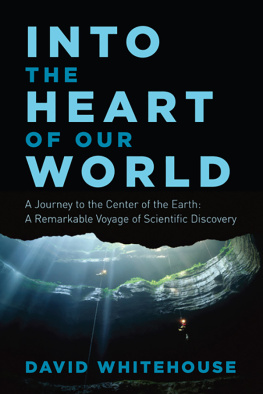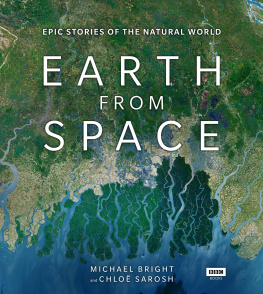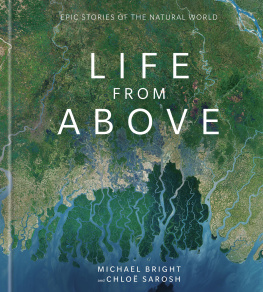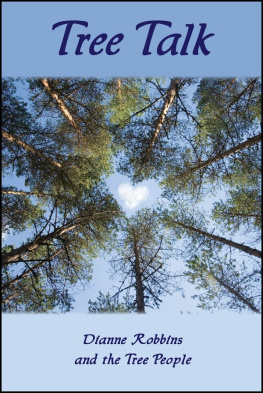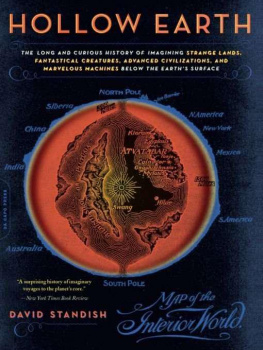The Hollow Earth theory was one of the first controversial scientific topics to interest Charles Fort, the American whose books about inexplicable events and phenomena led to the creation of the Fortean Society and, indirectly, hugely successful movies such as Close Encounters of the ThirdKind and the TV series The X-Files. This indefatigable journalist, who spent his life collecting weird and bizarre stories for which science had no ready explanation, was dismissed in some quarters as a crank who championed the most absurd theories; to others, like the English author Eric Frank Russell, he was the only real genius sf ever had.
Fort, who was born in 1874 and died in 1932, dedicated himself to trying to convince people that the world on which we live is a much stranger place than we realise. Although he had no scientific training and culled much of his material from books, newspapers and journals, he believed that humans should be made aware of the undeniably improbable beliefs about the world they inhabited. A quick-witted but often cussed man, he regularly attacked the scientific establishment for dogmatically dismissing unconventional opinions, and ran foul of the establishment for what some saw as alarmist theories that we might all be the property of omniscient aliens. At the age of 43 Fort was suddenly freed from the need to work when he came into a legacy, and thereafter threw himself wholeheartedly into his investigations. The result was a series of ground-breaking works, including The Book of the Damned (1919), New Lands (1923) and Wild Talents (1932), which have subsequently assured his reputation.
It was early on in his research into strange science that Fort first came across references to the Hollow Earth enigma. This immediately excited his interest as a subject worthy of study, and he began planning a work entitled Y to investigate the story. Although, sadly, he never completely finished or published the manuscript, in it he started piecing together the main threads of the legend which he discovered had been recorded since Biblical times and even earlier. The facts as he learned them were that the interior of our planet is actually hollow and may have been inhabited since time immemorial. Some accounts he came across suggested that these subterranean people could be the survivors of the lost continents of Atlantis or Mu, who had fled to the underground world when their lands were inundated.
Like others drawn to the remarkable story, Fort learned that investigators had reached the conclusion that the Earth was doughnut-shaped, rather like the Van Allen belts surrounding the planet, and there were a number of theories as to why it was not solid, as science claimed, but hollow with a central sun and its own hospitable atmosphere and climate. At the North and South Poles there were believed to be giant holes leading to this world, holes anywhere between 800 to 1,400 miles in diameter at their widest points, curving through a crust of about 900 miles with a gap of about 300 miles at the narrowest point. Through these a sea or air explorer might gain entry. Inside lay a subterranean paradise of oceans and landmasses, as well as rich and fertile countryside able to sustain plant, animal and human lifealmost an inverted mirror-image of our own world.
By contrast, the scientific textbooks which Fort consulted told him that the Earth was a solid, oblate spheroid with an equatorial diameter of 7,926 miles and its polar dimension of 7,900 miles. It was thought to consist of an inner core extending to about 800 miles from the centre (possibly consisting of solid iron and nickel), an outer core about 1,400 miles thick (possibly of molten iron and nickel) and a mantle of solid rock about 1,800 miles thick, separated from the outer crust and varying in thickness from three to five miles. The area of land surface of the Earth amounted to 57 million square miles with over 139 million square miles of sea floor. The planet was estimated to weigh six sextillion tons.
The more he read, the more Fort became convincedas other Hollow Earth researchers have been before and sincethat there still had to be an immense region underground that was completely unknown. He challenged the conceit and competence of scientists, agreeing with another suggestion that if the Earth was a solid sphere it would surely weigh much more than six sextillion tons. It seemed likely that the core region which science could not fully explain might well have a radius of as much as 2,200 milesmore than enough to accommodate, say, the Moon, which had a diameter of 2,160 miles. So what could possibly exist there?
Charles Fort noted all the legends and theories he could find in his manuscript, retelling them in the same highly individualistic style that became his hallmark: a mixture of impressive amounts of data with the occasional direct statement. Although he was always prepared to admit that some of the material he utilised might be dubious, scientifically-speaking, Fort never deviated from his conviction that there was a kind of unity in all thingseven, apparently, the most unrelated facts. It might seem crazy to some people to learn that the world was, after all, hollow, but there was still a lot of evidence to support the concept. And if this was the case, it provided an explanation for so many of the phenomena he had gathered.
The books by Charles Fort which led to the inauguration of the Fortean Society to continue his work, and later a monthly magazine, Fortean Times, have also encouraged subsequent generations of writers to approach all manner of unlikely concepts in an unprejudiced way. People like Graham Hancock, recently described by the


